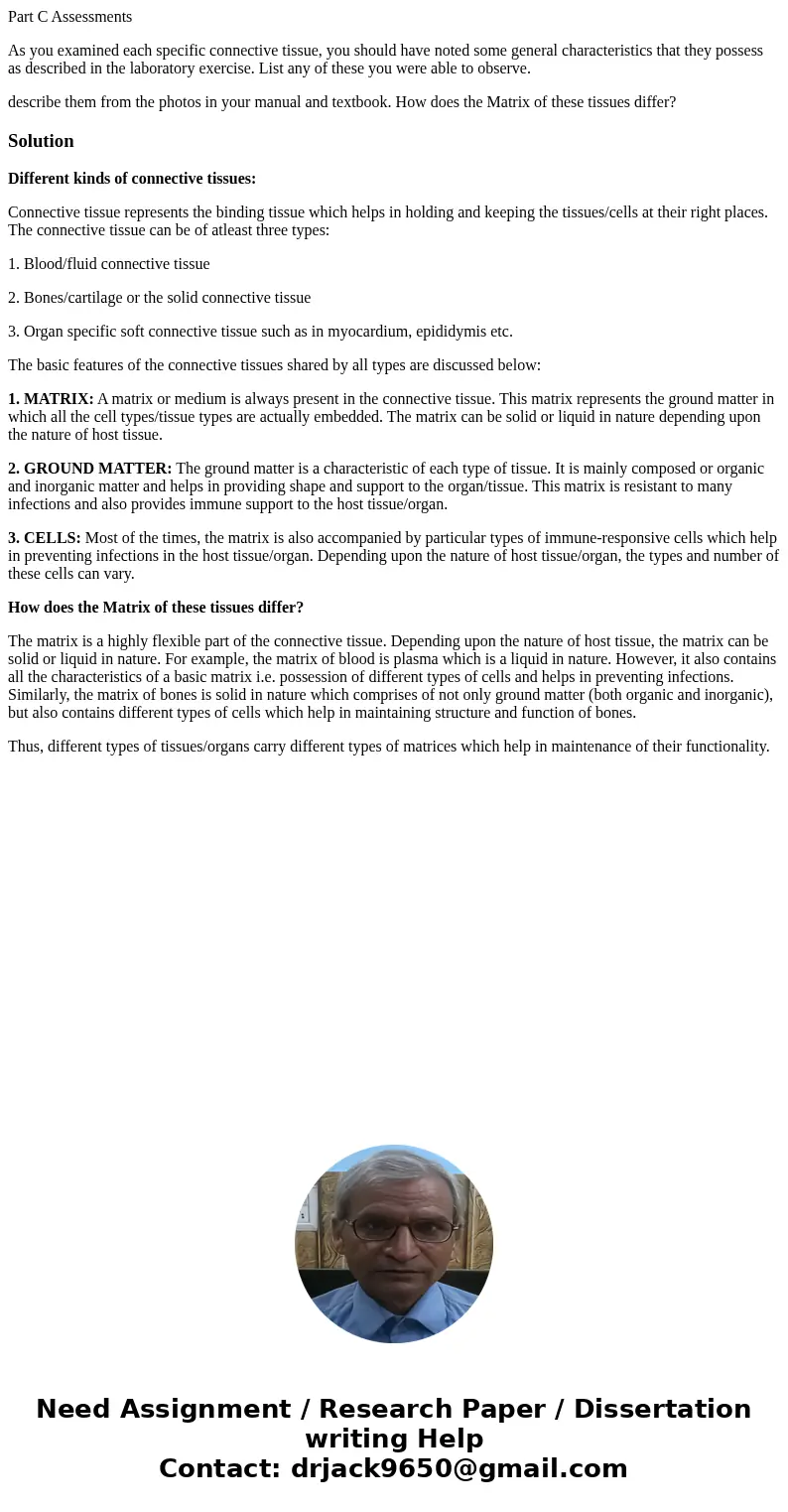Part C Assessments As you examined each specific connective
Part C Assessments
As you examined each specific connective tissue, you should have noted some general characteristics that they possess as described in the laboratory exercise. List any of these you were able to observe.
describe them from the photos in your manual and textbook. How does the Matrix of these tissues differ?
Solution
Different kinds of connective tissues:
Connective tissue represents the binding tissue which helps in holding and keeping the tissues/cells at their right places. The connective tissue can be of atleast three types:
1. Blood/fluid connective tissue
2. Bones/cartilage or the solid connective tissue
3. Organ specific soft connective tissue such as in myocardium, epididymis etc.
The basic features of the connective tissues shared by all types are discussed below:
1. MATRIX: A matrix or medium is always present in the connective tissue. This matrix represents the ground matter in which all the cell types/tissue types are actually embedded. The matrix can be solid or liquid in nature depending upon the nature of host tissue.
2. GROUND MATTER: The ground matter is a characteristic of each type of tissue. It is mainly composed or organic and inorganic matter and helps in providing shape and support to the organ/tissue. This matrix is resistant to many infections and also provides immune support to the host tissue/organ.
3. CELLS: Most of the times, the matrix is also accompanied by particular types of immune-responsive cells which help in preventing infections in the host tissue/organ. Depending upon the nature of host tissue/organ, the types and number of these cells can vary.
How does the Matrix of these tissues differ?
The matrix is a highly flexible part of the connective tissue. Depending upon the nature of host tissue, the matrix can be solid or liquid in nature. For example, the matrix of blood is plasma which is a liquid in nature. However, it also contains all the characteristics of a basic matrix i.e. possession of different types of cells and helps in preventing infections. Similarly, the matrix of bones is solid in nature which comprises of not only ground matter (both organic and inorganic), but also contains different types of cells which help in maintaining structure and function of bones.
Thus, different types of tissues/organs carry different types of matrices which help in maintenance of their functionality.

 Homework Sourse
Homework Sourse